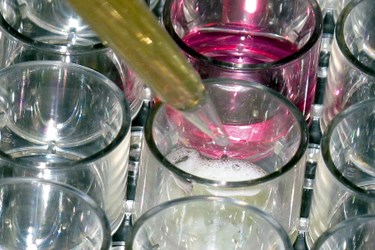Scientists Develop Antibacterial Bone Implant Material
By Jof Enriquez,
Follow me on Twitter @jofenriq

A team of researchers from Germany’s Fraunhofer Institute for Interfacial Engineering and Biotechnology IGB and France’s CIRIMAT Carnot Institute has created a bone implant substance that actively kills dangerous bacteria, potentially decreasing the chance of infection in a variety of bone-related surgeries.
The goal of the international research effort is to develop methods to limit the incidence of infections associated with surgical procedures. The task is difficult one, since many bacteria living in hospitals are already highly immune to antibiotics.
In this most recent development, however, scientists involved with the project have created a bone implant material that has so far proven effective in killing harmful bacteria.
The implant material consists of fine-grained apatite crystals similar in both compositional makeup and structure to human bone. Made up largely of calcium and phosphorus, the researchers say these apatite crystals could be ideal for implant applications. Additionally, they added different types of metal ions such as silver, copper, and zinc, as well as specialized enzymes and peptides, to the implant material in an effort to make it resistant to harmful bacteria.
“With the help of peptides, apatite granules and pellets are protected against bacteria,” Michaela Müller, an IGB scientist involved with the project, said in a news article published recently by Health Canal.
In early experiments, the finished substance proved effective in eliminating more than 90 percent of unwanted germs and bacteria, the article said.
After these successful tests, scientists say they are now focusing their attention on determining precisely how the bacteria-killing substance might interact with human cells. They have begun this process with a series of new laboratory tests in which the implant material will be added to human cell cultures, observed, and analyzed.
“Antibacterial activity alone is not everything in medicine,” said Anke Burger-Kentischer, group manager of Molecular Cell Technology at the IGB. “Before a product can be used in practice, it has to be ensured that it does not harm the patient. Using these cytotoxicity assays, we have been able to determine how many metal ions, enzymes, or peptides in the granules could be tolerated by the cells.”
Image credit: Fraunhofer Institute
